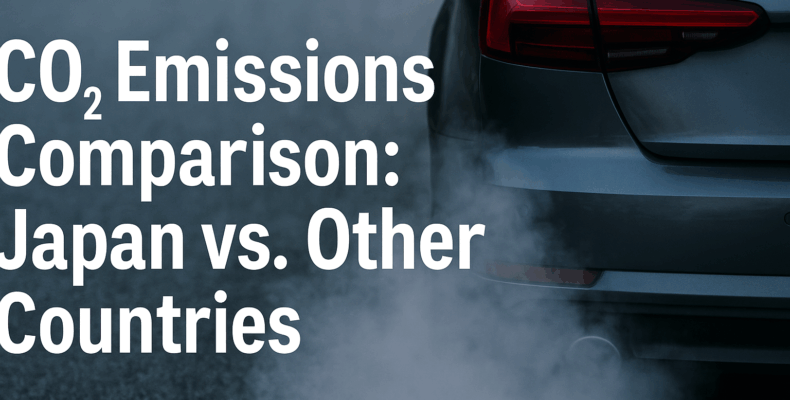How Japanese Cars Lead the Way in Reducing Carbon Footprints
In the global push for cleaner transportation, CO2 emissions have become one of the most critical performance indicators. Consumers, regulators, and importers all want vehicles that are not only reliable and affordable, but also environmentally responsible.
Japan has consistently been a world leader in developing low-emission vehicles — from fuel-efficient gasoline engines to pioneering hybrids and fully electric cars.
This article explores how Japanese vehicles compare to those from other countries in terms of CO2 emissions, and what it means for global buyers and importers.
1. Japan’s Automotive CO2 Standards
Japanese automakers follow some of the strictest fuel economy and emissions standards in the world. The Japanese government sets targets under the “Top Runner Program,” which encourages continuous improvement in efficiency.
Key features include:
-
Early adoption of hybrid technology (since 1997)
-
CO2 reduction targets based on vehicle weight categories
-
Advanced exhaust treatment systems across all segments
-
Continuous innovation in combustion, turbocharging, and EV powertrains
2. Average CO2 Emissions: Japan vs. Other Markets
According to international automotive studies and environmental reports:
| Country/Region | Average CO2 (g/km) for New Cars |
|---|---|
| Japan | 100–110 g/km |
| European Union | 120–130 g/km |
| United States | 160–170 g/km |
| India | 120–140 g/km |
| Australia | 180+ g/km |
Japanese vehicles consistently score lower due to:
-
Lightweight designs
-
Smaller engine displacements
-
Early hybrid adoption
-
Stricter urban emission enforcement
3. Japan’s Hybrid and EV Leadership
Japan was the first country to mass-produce hybrid vehicles, and continues to lead in hybrid technology exports.
Popular low-emission Japanese models include:
-
Toyota Prius (as low as 70–90 g/km CO2)
-
Honda Insight
-
Nissan Note e-POWER
-
Mazda 2 Hybrid
-
Toyota Aqua / Yaris Hybrid
Many of these vehicles maintain low CO2 levels even after years of use, making them ideal for international resale markets.
4. Benefits for International Importers
Importing low-emission Japanese cars provides:
-
Compliance with urban environmental regulations
-
Lower road tax or registration fees in many countries
-
Higher resale value due to environmental benefits
-
Increased consumer demand in eco-conscious markets
Some cities and countries are now restricting or heavily taxing high-emission vehicles, making Japanese imports a smart long-term investment.
5. Used Japanese Cars: Still Environmentally Friendly
Even used Japanese vehicles retain strong eco-performance due to:
-
Strict vehicle inspections (Shaken)
-
Regular maintenance histories
-
Engine technologies focused on efficiency, even in older models
Buyers in Africa, Southeast Asia, Europe, and the Caribbean increasingly prefer Japanese hybrids or small-engine vehicles for their cleaner profiles and lower fuel costs.
Trusted Exporters of Eco-Friendly Japanese Used Cars
If you’re looking to import low-emission vehicles from Japan, choose exporters known for transparency and environmental quality:
-
EVERY Co., Ltd. – Focused on quality Japanese exports
-
SBT Co. Ltd.
-
Be Forward
-
Qualitex Trading
-
Autorec Enterprise Ltd.
Learn more:
Top Recommended Japanese Used Car Export Companies for International Customers
Final Thoughts: Clean Cars, Clear Advantage
Japanese vehicles continue to offer some of the lowest CO2 emissions in the global market — not only when new, but also throughout their used life cycle. Whether you’re an importer, a dealer, or an eco-conscious driver, choosing a Japanese car is choosing a cleaner, smarter future.
Looking to reduce your carbon footprint and improve your vehicle offerings? Start with Japan.
